#merchants
Text

Strangers in Lively Town
Took me half a year to complete 🤪
46K notes
·
View notes
Photo

Encounter: cloud that keeps handing people cups they clearly don’t want or need
4K notes
·
View notes
Note
Hello! I’ve seen your work over the years and every time I see it I always get a kick over it. I have a sociological question to ask you about centaurs. How do humans or other races fit into their lives? Both in a general sense of life, platonically, and romantically? Sorry if you’ve answered this before.
Thank you! It always blows my mind that I've been puttering away in my little corner of the internet with my horse people for this long!
I've covered a couple different specific situations in my cultures; re platonic and romantic? but for the most part is it boils down to that romantic would probably be rare and boil down to individual choices for how they approach it? But for platonic I have sort of covered a lot of platonic relationships just from the standpoint that basically all my centaur cultures have a deep societal tie to another race.
At first it was a lot of convenience- a way to get around the difficulties of centaur bodies getting in the way of certain ways of life, but at this point I just do it cause it's lovely to me!
Like the merchants build their cities with the dwarves and they both benefit from the dwarves engineering and centaur's strength and mobility re:trade. The centaurs easily manage huge farms, trade networks, and logging infrastructure on their strength and speed but benefit from dwarves (and a small portion of other bipeds) being better set up for building (try to imagine a centaur making a roof, it's vexed me for a year now..) and generally engineering wizzes so it's a mutually beneficial relationship to entwine their cultures in the main Merchant City

Obviously my Riders are wholly entwined with their biped family as I've talked extensively about in.. too many posts probably haha

but then my very lightly covered Mountain folk have a different, almost religious relationship with the Forest Giants in which the relationship between their two cultures is separate other than the spiritual importance they hold with each other. The giants live approximately 300 years but are very slow, sedate creatures who prize a life of peace and telling stories over all else. So the centaurs almost view them as minor deities and the giants keep and love the stories their fiery little companions entrust to them.
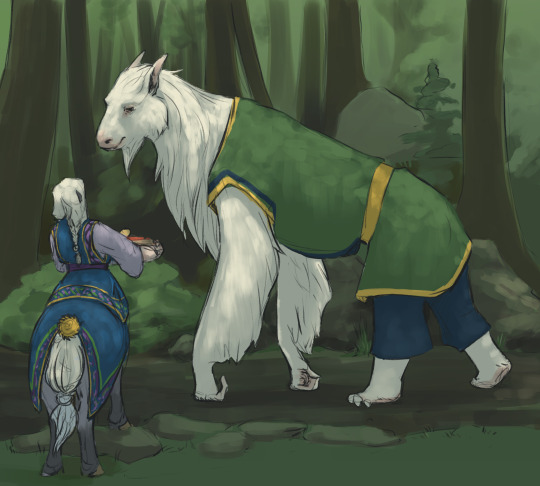
As you can tell, I really love building all these races and cultures and then mashing them together and see what comes out! I find it makes the world feel more real and lived in when I'm not only thinking about how a culture would work and operate, but also how they interact with their neighbors! What's their main export and how does that shape their life and relations?? These are the questions I get LOST in so thank you for asking :D
#asked and answered#centaurs#riders#mountain folk#merchants#I REALLY NEED TO COME UP WITH NAMES#but I have commitment problems#man I can't even get into the other merchant connections#they also work with my version of elves#in their logging operations#and their network of mail delivery taurs have a whole seperate thing with harpies#I LOVE CONNECTING CULTURES#in ways that aren't fighting!
274 notes
·
View notes
Photo

Hermes is the herald of the gods, he is also protector of travellers, merchants, thieves and orators. Today is his day of traders, a day where you can consider making offerings to Hermes for success in business, selling your own items, food, crafts etc.
Some good offerings to Hermes include
- Acts of devotion (helping lost people, giving to the needy, helping small businesses, breaking the news to people, making sure people hear truths)
- Coins
- Crafted items
- Cockrel/Chicken feathers
- Dice
- Gold and silver objects
- Food that is not from where you are / your culture
#hermes#greek#god#hellenic#pagan#wiccan#witch#witchcraft#offerings#deity#merchants#business#crafting
243 notes
·
View notes
Note
Please tell me more about neighbourhood PMCs in renaissance Italy
It would be my pleasure! (My research into this owes a lot to the excellent Power and Imagination: City-States in Renaissance Italy by Lauro Martines.)

The first thing to note that, unlike the condottieri, these were not private military companies. Rather, the neighborhood military companies (in the sense of a military unit, rather than a profit-making entity) were self-defense organizations formed as part of a centuries-long political struggle for control over the urban commune between the signorile (the urban chivalry)/nobilita (the urban nobility) and the populo (the guilded middle class, who claimed to speak on behalf of "the people").
This conflict followed much the same logic that had given rise to the medieval commune in the first place. Legally, the communes had started as mutual defense pacts between the signorile and the cives (the free citizens of the city) against the rural feudal nobility, which had given these groups the military and political muscle to push out the marquises and viscounts and barons and claim exclusive authority over the tax system, the judicial system, and the military.
So it made sense that, once they had vanquished their enemies and established the commune as the sovereign, both sides would use the same tactic in their struggle over which of them would rule the commune that ruled the city. The signorile and nobilita formed themselves into consorteria or "tower societies," by which ancient families allied with one another (complete with dynastic marriage alliances!) to build and garrison the towers with the knights, squires, men-at-arms, and bravi of their households. These phallic castle substitutes were incredibly formidable within the context of urban warfare, as relatively small numbers of men with crossbows could rain down hell on besiegers from the upper windows and bridges between towers, even as the poor bastards on the ground tried to force the heavy doors down below.
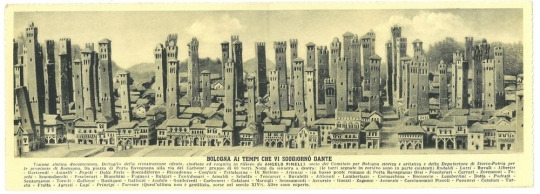
To combat noble domination of communal government, achieve direct representation on the political councils, establish equity of taxation and regulate interest rates, and enforce legal equality between nobility and citizenry, the populo formed themselves into guilds to build alliances between merchants and artisans in the same industries. However, these amateur soldiers struggled to fight on even footing with fully-trained and well-equipped professional soldiers, and the guild militias were frequently defeated.
To solve their military dilemma, the populo engaged in political coalition-building with the oldest units of the urban commune: the neighborhoods. When the cities of medieval Italy were originally founded, they had been rather decentralized transplantations of the rural villages, where before people had any conception of a city-wide collective their primary allegiance was to their neighborhood. As can still be seen in the Palio di Siena to this day, these contrade built a strong identity based on local street gangs, the parish church, their traditional heraldry, and their traditional rivalries with the stronzi in the next contrade over. And whether they were maggiori, minori, or unguilded laborers, everyone in the city was a member of their contrade.
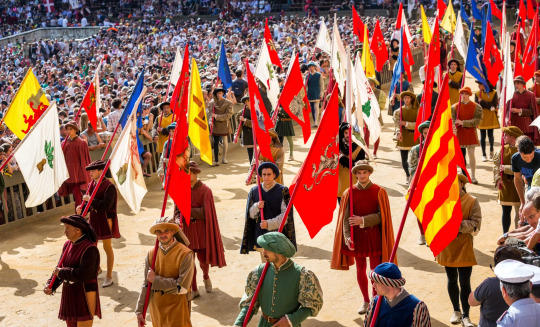
As Martines describes, the populo both recruited from (and borrowed the traditions of) the contrade to form their armed neighborhood companies into a force that would have the manpower, the discipline, and the morale to take on the consorteria:
"Every company had its distinctive banner and every house in the city was administratively under the sign of a company. A dragon, a whip, a serpent, a bull, a bounding horse, a lion, a ladder: these, in different colors and on contrasting fields, were some of the leitmotifs of the twenty different banners. They were emblazoned on individual shields and helmets. Rigorous regulations required guildsmen to keep their arms near at hand, above all in troubled times. The call to arms for the twenty companies was the ringing of a special bell, posted near the main public square. A standard-bearer, flanked by four lieutenants, was in command of each company."
To knit these companies organized by neighborhood into a single cohesive force, the lawyers' guilds within the populo created a state within a state, complete with written constitutions, guild charters, legal codes, legislative and executive councils. Under these constitutions, the populo's councils would elect a capitano del popolo, a professional soldier from outside the city who would serve as a politically-neutral commander, with a direct chain of command over the gonfaloniere and lieutenants of the neighborhood companies, to lead the populo against their noble would-be overlords.
And in commune after commune, the neighborhood companies made war against the consorteria, taking the towers one by one and turning them into fortresses of the populo. The victorious guilds turned their newly-won military might into political hegemony over the commune, stripping the nobilita of their power and privilege and forcing them either into submission or exile. Then they directed their veteran neighborhood companies outward to seize control of the rural hinterland from the feudal aristocracy, until the city had become city-state.
(Ironically, in the process, the populo gave birth to the condottieri, as the nobility who had lost their landed wealth and political power took their one remaining asset - their military training and equipment - and became professional mercenaries. But that's a story for another time...)
#history#historical analysis#renaissance history#renaissance fantasy#medieval cities#city-states#urban communes#guilds#city charters#guild charters#mercenaries#nobility#artisans#burgher rights#merchants
134 notes
·
View notes
Text

Berthel Thorvaldsen • Mercury about to kill Argos (National Museum, Krakow Collection)
#hermes statue#Hermes#mercury#god Mercury#Mercure#hellenic gods#greek gods#greek god statue#god hermes#hellenic revivalism#hellenic polytheism#hellenic pagan#greek polytheism#ancient greece gods#gods#polytheism#travel#merchants#thieves#roads#crossroads#psychopomp#gifts#riches#joy#happiness#laugh#hermes worship#hermes worshipper#cult of Hermes
410 notes
·
View notes
Text
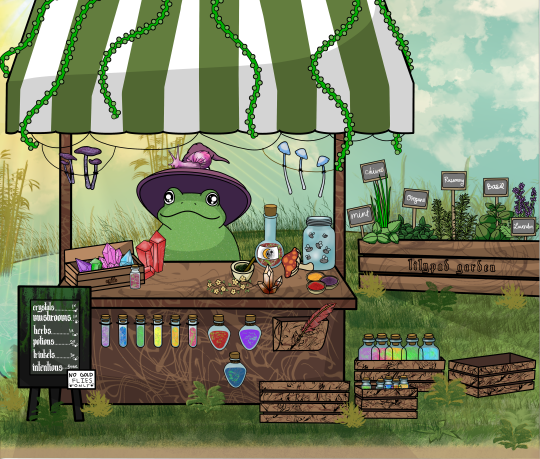


I was going to do 4 of these but...... I'm working on other things now lol.
Critter Merchants!
♡ Froggo is selling potions and magic items (in exchange for bugs)
♡ Gecko is selling flowers and plants (to attract the bugs)
♡ Nightjar is a moody gothic artist selling his works, trying to look approachable to patrons.
#merchants#critters#animals#artists on tumblr#fantasy#magic#digitalart#creatures#nightjar#greatearednightjar#frog#frogposting#gecko#lizard#reptiles#amphibians#birds#birb#birdposting#herpetology#independent artist#my art#merchant oc
19 notes
·
View notes
Text
A UNESCO robotic underwater survey has revealed 24 Mediterranean Sera shipwrecks. This revolution in archaeology is evidence that merchant vessels have been sailing in every direction across this sea, not just for centuries, but for millennia.
58 notes
·
View notes
Text
Napoleon did not like merchants: “A rich man is often a lazy person without merit,” he declared. “A rich merchant is often rich only by the art of selling at a high price or stealing.”

Book: Nouvelle Histoire de Paris; Le Consulat et l’Empire, by Jean Tulard
#Jean Tulard#Nouvelle Histoire de Paris#Napoleon#napoleon bonaparte#book#quote#translation#napoleonic era#napoleonic#economics#economy#finance#merchants#France
27 notes
·
View notes
Text
Crolk the Curio Collector by Cardboard Anvil

#cardboard anvil#kleptogoblicon#crolk the curio collector#loot#bag#bags#generators#chart#charts#table#tables#merchant#merchants#random#encounter#encounters
11 notes
·
View notes
Photo
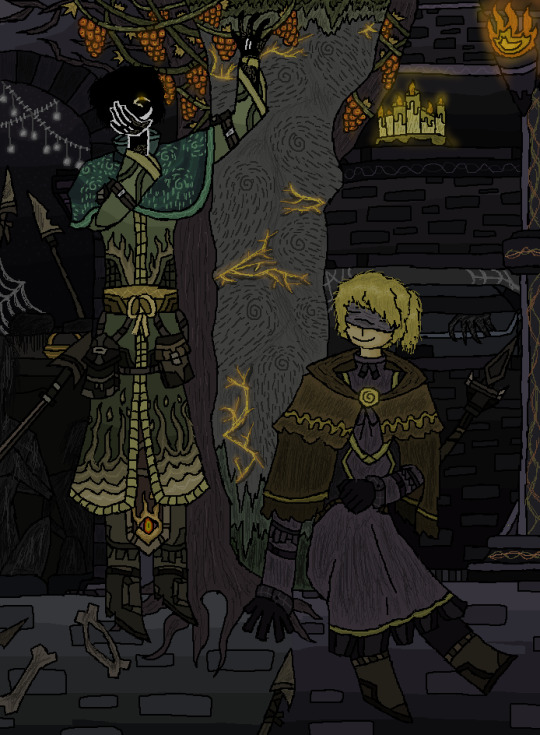

Oh how much I love drawing Shabriri all shadowy and mysterious due to how much of a menace he was.. Take just two madness fellas hanging out!
#elden ring#hyetta#shabriri#frenzied flame#madness#How would the Shabriri grapes even taste bro they look so foul#Merchants#Irina#I HAD NO IDEA IRINA AND HYETTA WERE THE SAME..
166 notes
·
View notes
Text
Slime Merchant by CM46

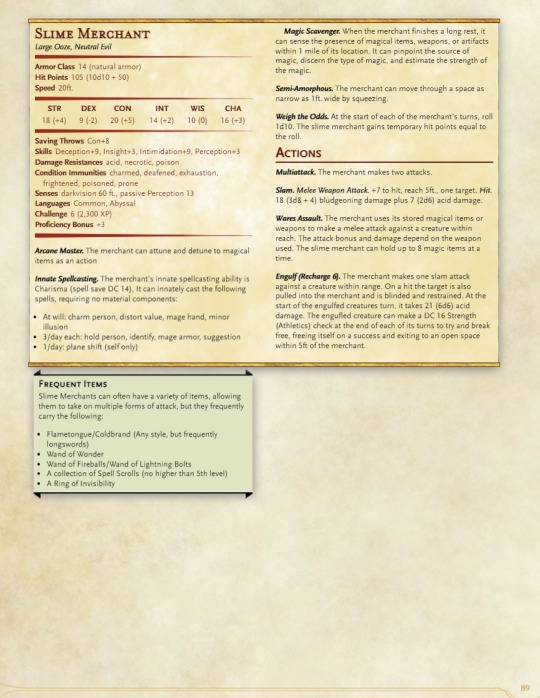
#ooze#slime#merchant#merchants#vendor#vendors#magic creatures#wild#random#nomadic#traveling#ruin#ruins#ruined#abandoned#lore#monster#monsters#monstrous#shop#shops#magic items#scrolls#potions#weapons#armor#shields#health#favorites#CR6
12 notes
·
View notes
Note
A Victorian King and Match-Seller, each with a lobster collar for a face. (Source: Godey's Lady's Book, 1867)
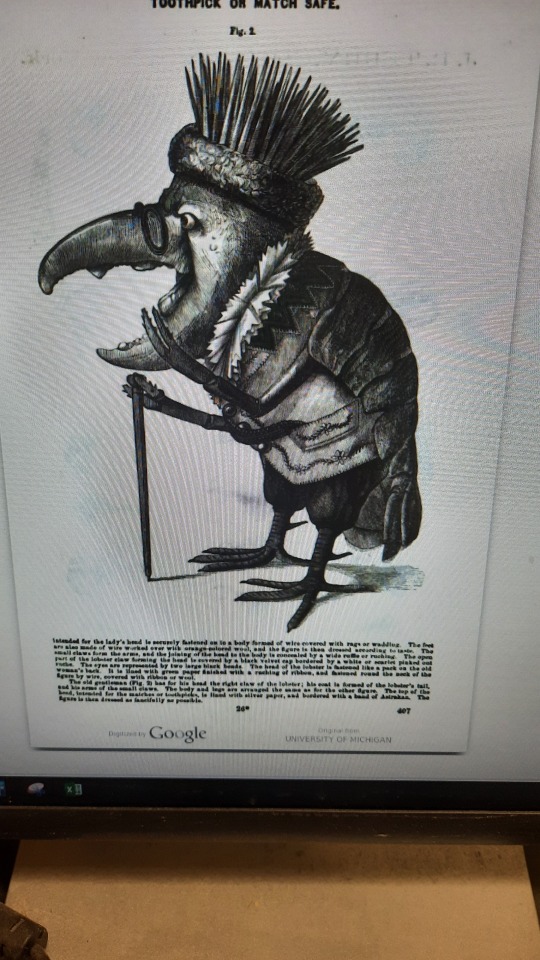

Encounter: pile of animal parts animated into a peddler of goods
211 notes
·
View notes
Text
Prompted by another kind message from a customer:
If you sell in TTRPGs, is it not standard practice to provide a PDF of your game when folks buy your book(s)?
I do, but I've had a fair few customers get confused thinking they've ordered a PDF when I go to send their book out.
They're always so polite in their emails too! It's nice to tell them they're getting both and not one or the other :)
#indie ttrpg#self publishing#publishing#pdfs#books#book seller#ttrpg#roleplaying games#merchants#purveyors of solde goodes#what other tags do people who make books use#idk#beggartok#is beggartok still a thing#it was when I used tiktok like 2 years ago peak pandemic#I fear I am getting older. Ugh. Oh well.
7 notes
·
View notes
Text

Arab merchants around the military camp in Aïn Fritissa, Morocco
French vintage postcard, mailed to Grenoble, France
#vintage#arab#tarjeta#france#morocco#briefkaart#postcard#photography#postal#carte postale#sepia#military#aïn fritissa#ephemera#historic#camp#french#ansichtskarte#merchants#postkarte#fritissa#postkaart#mailed#photo#grenoble
3 notes
·
View notes
Note
Would you say that “A Christmas Carol” was the anti capitalist story many see it as today? Or is it better thought of as a lament for the decline of noblesse oblige in favour of early stage capitalism and a call for the capitalists to be more like the (imagined) nobles of old?
I'm not as much a Dickens-head as some other folks on Tumblr, but my interpretation is that "A Christmas Carol" is a critique of miserly capitalism. Rather than living a life of plutocratic excess, Scrooge just accumulates for the sake of accumulation rather than using his money to enjoy life and to help others enjoy their lives - which in turn would enrich his own.

So yes, I think "noblesse oblige" comes close to what Dickens was going for. Dickens was the furthest thing from a radical, and what he ultimately wanted was for rich people to be charitable and generous to the poor.
I think the term we're actually looking for here is a phrase that EP Thompson coined: "moral economy." As fully elaborated in a classic article, "The Moral Economy of the English Crowd in the Eighteenth Century," moral economy is an ideology of the socially and culturally appropriate uses of money and economic power (and vice versa the inappropriate misues of the same) - one that doesn't quite rise to the level of full Marxist revolutionary socialism, but inspires mass action against members of the elite who violate custom and tradition.

#nobility#capitalism#moral economy#history of economic thought#political economy#christmas carol#charles dickens#ep thompson#social history#cultural history#merchants
45 notes
·
View notes